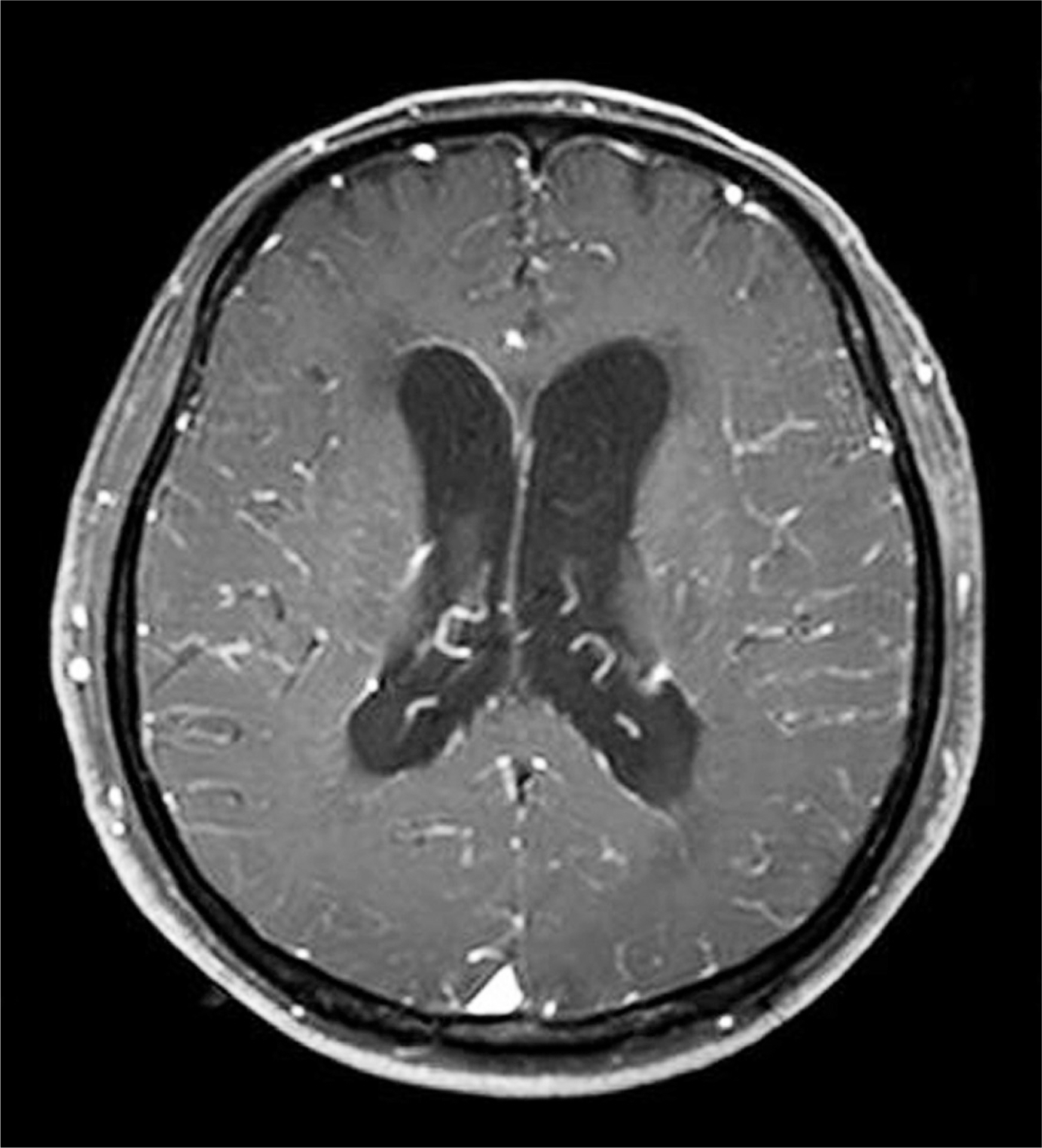J Korean Soc Spine Surg.
2016 Mar;23(1):31-35. 10.4184/jkss.2016.23.1.31.
Remote Cerebellar Hemorrhage due to Cerebrospinal Fluid Leakage or Meningitis after Spinal Surgery: Case Report
- Affiliations
-
- 1Department of Orthopedic Surgery, Ulsan University Hospital, College of Medicine, Ulsan University, Korea. jrcha@uuh.ulsan.kr
- KMID: 2161010
- DOI: http://doi.org/10.4184/jkss.2016.23.1.31
Abstract
- STUDY DESIGN: A case report.
OBJECTIVES
To report a rare case of remote cerebellar hemorrhage (RCH) as a complication of spinal surgery. SUMMARY OF LITERATURE REVIEW: Remote cerebellar hemorrhage is rare but lethal as a complication of spinal surgery. Interestingly, dural tears and cerebrospinal fluid (CSF) leakage are reported in all published cases of RCH.
MATERIALS AND METHODS
A 67-year-old man had posterior lumbar decompression and posterolateral fusion for spinal stenosis at L4/5/S1. Intraoperatively, the dura was torn and there was a loss of CSF. The dural tear was sutured immediately in a water-tight manner. After surgery, the patient complained of headache and dizziness. On postoperative day 44, brain magnetic resonance imaging (MRI) showed meningeal enhancement suggesting meningitis. On postoperative day 54, brain computed tomography (CT) showed cerebellar edema and hemorrhage, and external ventricular derivation was performed.
RESULTS
The patient died.
CONCLUSIONS
Special attention should be paid to prevent dural damage during spinal surgery or minimize CSF leakage in the case of dural damage and tears during spinal surgery, and CT and MRI should be promptly performed for symptomatic patients.
Keyword
MeSH Terms
Figure
Reference
-
1. Tafazal SI, Sell PJ. Incidental durotomy in lumbar spine surgery: incidence and management. Eur Spine J. 2005; 14:287–90.
Article2. Castle M, Barrena C, Sampron N, et al. [Remote cerebellar haemorrhage after lumbar arthrodesis: case report and literature review]. Neurocirugia (Astur). 2011; 22:574–8.3. Ulivieri S, Neri L, Oliveri G. Remote cerebellar haema-toma after lumbar disc surgery. Case report. Ann Ital Chir. 2009; 80:219–20.4. Lee HY, Kim SH, So KY. Seizure and delayed emergence from anesthesia resulting from remote cerebellar hemorrhage after lumbar spine surgery -A case report. Korean J Anesthesiol. 2012; 63:270–3.
Article5. Chadduck WM. Cerebellar hemorrhage complicating cervical laminectomy. Neurosurgery. 1981; 9:185–9.
Article6. Konya D, Ozgen S, Pamir MN. Cerebellar hemorrhage after spinal surgery: case report and review of the literature. Eur Spine J. 2006; 15:95–9.
Article7. Friedman JA, Ecker RD, Piepgras DG, et al. Cerebellar hemorrhage after spinal surgery: report of two cases and literature review. Neurosurgery. 2002; 50:1361–3.
Article8. Bernal-Garcia LM, Cabezudo-Artero JM, Ortega-Mar-tinez M, et al. [Remote cerebellar hemorrhage after lumbar spinal fluid drainage. Report of two cases and literature review]. Neurocirugia (Astur). 2008; 19:440–5.9. Brockmann MA, Nowak G, Reusche E, et al. Zebra sign: cerebellar bleeding pattern characteristic of cerebrospinal fluid loss. Case report. J Neurosurg. 2005; 102:1159–62.10. Gul S, Kalayci M, Acikgoz B. A rare complication of spinal surgery: cerebellar hemorrhage. Turk Neurosurg. 2010; 20:413–7.
- Full Text Links
- Actions
-
Cited
- CITED
-
- Close
- Share
- Similar articles
-
- Subarachnoid Hemorrhage Presenting with Seizure due to Cerebrospinal Fluid Leakage after Spinal Surgery
- Remote Cerebral and Cerebellar Hemorrhage after Massive Cerebrospinal Fluid Leakage
- Remote Cerebellar Hemorrhage after Lumbar Spinal Surgery
- Remote Cerebellar Hemorrhage after Spinal Surgery
- Remote Cerebellar Hemorrhage after Intradural Disc Surgery





